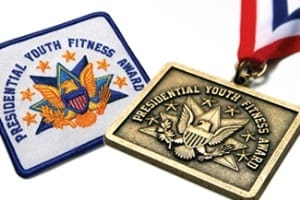statFor some women, it's about making an elegantement at special events or being a couple…

What is the New Presidential Youth Fitness Program and How Has it Changed?
 Many of us may remember the physical education classes we were required to take when we were in elementary school. It was a familiar sight to pass by the gym door and see students doing sit-ups, push-ups and squat-thrusts. Things are changing.
Many of us may remember the physical education classes we were required to take when we were in elementary school. It was a familiar sight to pass by the gym door and see students doing sit-ups, push-ups and squat-thrusts. Things are changing.
First implemented in 1966, the Youth Fitness Test given to each student was meant to measure physical ability relative to his or her peers. Shellie Pfohl is the executive director of the President’s Council on Fitness, Sports and Nutrition. According to Ms. Pfohl, “By design, the old test compared kids against each other, so by design 50% failed.” In addition, the test provided little information on the student’s actual level of health.
The test has recently been given a major overhaul, and the new Presidential Youth Fitness Program has been revised to promote exercise as a means of achieving good overall health. Why the change? Rates of chronic disease are growing rapidly, and lack of exercise is a major contributor to the problem. “What is really apparent is that we have an obesity epidemic in our country, so we feel like we now need to focus on health versus athletic performance,” says Pfohl. Under the new program, youth are now evaluated by taking the Fitnessgram® test. The test is scored according to five criteria: body composition, muscle strength, muscular endurance, cardiovascular fitness or aerobic capacity and flexibility.
The new Presidential Youth Fitness Program encourages students to develop personal fitness goals that will hopefully remain with them throughout their lifetime. First Lady Michelle Obama launched the “Let’s Move!” initiative in order to help solve the growing problem of childhood obesity. She said of the revised youth fitness program, “One of the reasons I’m excited about the new program is because kids won’t be measured on how fast they can run compared to their classmates, it’ll be based on what they can do and what their own goal is. This is important because we want physical activity to be a lifelong habit.”
The Fitnessgram® uses a skin-fold test to measure body composition (the amount of body fat in relation to weight and height, also referred to as BMI). It uses push-ups, modified pull-ups and curl-ups to measure muscle strength. Aerobic capacity is measured by a PACER (Progressive Aerobic Cardiovascular Endurance Run) test. Finally, the sit-and-reach test measures flexibility.
When students score within the Fitnessgram® Healthy Fitness Standards in five out of six events, they are eligible for a Presidential Youth Fitness award. Those who score below these standards will be given information about the health risks associated with scoring low in the designated areas and will be instructed on ways to achieve better physical fitness.
This program is voluntary for schools, and experts stress that it is just as important to encourage physical activity at home. As Dr. Kent Adams, professor of kinesiology at California State University at Monterey Bay notes, “Schools are important, yes. But we have an obligation in our homes and communities to be partners in promoting a healthy lifestyle in our daily lives.”




